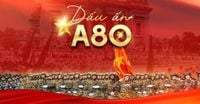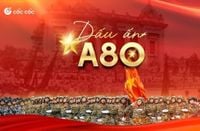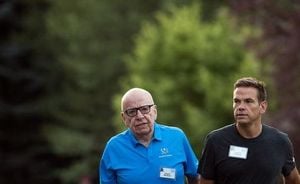In the days leading up to Vietnam’s 80th National Day anniversary on September 2, 2025, a digital wave swept across the country. According to data from the Cốc Cốc browser, more than 7.2 million search queries related to the grand celebration were recorded between July 1 and September 4. The most popular keywords included “2-9,” “đại lễ,” “Quốc khánh,” and “tổng duyệt,” reflecting a surge in patriotic spirit and public anticipation as the date approached.
The crescendo of online excitement was unmistakable. Interest in the anniversary soared from late August, peaking precisely on National Day. As reported by Kinhtedothi, this digital buzz was more than just numbers—it mirrored the collective enthusiasm of the Vietnamese people, who eagerly sought information on parade schedules, routes, and organizational maps. Many even posed the question: “How many years is the parade held once?”
But it wasn’t just curiosity about the logistics. The trend of “camping spots” to watch the parade live became a phenomenon in itself. This led to a spike in searches for central Hanoi streets such as Hùng Vương, Lê Hồng Phong, Ngọc Hà, Lê Duẩn, Nguyễn Thái Học, Kim Mã, and Liễu Giai, as people scrambled to secure the best vantage points. As Younet Media highlighted, from August 26 to September 1 alone, over 5 million searches focused on the anniversary, with lively discussions about parade blocks, the scale of the event, and the throngs of citizens gathering along the streets.
“The spirit of the people was truly exuberant, and the momentum leading up to the event was palpable,” noted a report by Tienphong, echoing the sentiments of millions who logged on in search of details about the festivities. The digital sphere, it seemed, became an extension of the national celebration itself.
Cultural and artistic interests also fueled the online frenzy. The film Mưa đỏ (Red Rain) by the People’s Army Cinema became a cultural sensation, generating 1.8 million searches within just three weeks of its release. Queries like “actor Mưa đỏ,” “Mưa đỏ soundtrack,” and “Mưa đỏ revenue” consistently ranked among the top trending topics. The fever for Mưa đỏ was not just about the movie—it was part of a broader wave of patriotic cultural expression that marked this milestone anniversary.
Music, too, played a starring role. The national anthem, Tiến quân ca (Marching Song), was the most searched song during the anniversary period, reaffirming its enduring status in the hearts of the Vietnamese people. New patriotic songs such as “Viết tiếp câu chuyện hòa bình” (Continue the Story of Peace), “Còn gì đẹp hơn” (What Could Be More Beautiful), and “Nỗi đau giữa hòa bình” (Pain Amidst Peace)—the latter featured in the Mưa đỏ soundtrack—also surged in popularity, landing among the top search queries. According to Kinhtedothi, these songs “blanketed the digital space with patriotic fervor.”
The digital commemoration wasn’t limited to information and entertainment. A unique online phenomenon emerged when the Party and State announced a special “100,000 đồng” gift for every citizen on National Day, as per Official Dispatch 149 from the Prime Minister. This announcement, first made public in late August, triggered a dramatic spike in searches related to how to receive the gift, particularly on August 28 and 29. The scramble for details highlighted the widespread interest and the government’s intent to foster unity and celebration across all walks of life.
Symbols of National Day became hot commodities online. Hundreds of thousands of search queries centered on products bearing the national flag—flags, shirts, scarves, hats, and stickers. Social media platforms were awash in red and yellow, as people sought ways to express their pride and join in the festivities, both online and offline. As Tienphong observed, “the holiday turned these items into digital highlights, reflecting a deep sense of national pride and the eager participation of Vietnamese citizens.”
The commemorative events themselves did not disappoint. The grand parade and ceremony at Ba Đình Square on September 2 concluded successfully, leaving a profound historical impression. The event not only showcased the strength and unity of the Vietnamese people but also sent a message of peace, friendship, and development to the international community. According to Kinhtedothi, “the 80th anniversary parade and ceremony at Ba Đình Square successfully concluded, leaving a profound historical impression and conveying messages of peace, friendship, and development to the international community.”
Online platforms became an integral part of the celebration. The “Proud Vietnam” campaign, which encouraged users to update their personal interfaces and AI-generated avatars on Zalo, drew millions of participants. This digital movement allowed people to display their patriotism in creative new ways, turning social media profiles into virtual flags waving in unison. Meanwhile, TikTok saw over 8,400 videos tagged with #RangRoVietNam (Radiant Vietnam), collectively amassing nearly 300 million views and further amplifying the spirit of national pride across cyberspace.
“The online sphere was buzzing with activity,” Kinhtedothi reported, noting that the wave of patriotic content on Zalo and TikTok “helped spread love for the homeland far and wide.” The fusion of tradition and technology, old and new, was evident everywhere—from the streets of Hanoi to the screens of smartphones.
What drove this unprecedented surge in digital engagement? In part, it was the scale and significance of the 80th anniversary—a round number that invited reflection on Vietnam’s journey since the August Revolution and the birth of the modern nation. But it was also the accessibility of information and the creative opportunities offered by digital platforms. People could find parade maps, relive historical moments, discover new patriotic songs, and join in national campaigns with just a few taps.
Of course, the online celebration reflected more than just technological progress. It was a testament to the enduring power of shared history and collective memory. As the country looked back on eight decades of independence, the digital outpouring became both a mirror and a megaphone for the hopes, pride, and unity of the Vietnamese people.
In the end, the 80th anniversary of National Day was not only marked by parades and official ceremonies but also by an unprecedented surge of digital participation. Millions came together—online and in person—to celebrate, remember, and look forward. The story of Vietnam’s National Day in 2025 will be remembered not just for the crowds in Ba Đình Square, but for the millions of voices, searches, and clicks that echoed across the digital landscape, weaving a new chapter in the country’s ongoing story of unity and pride.





